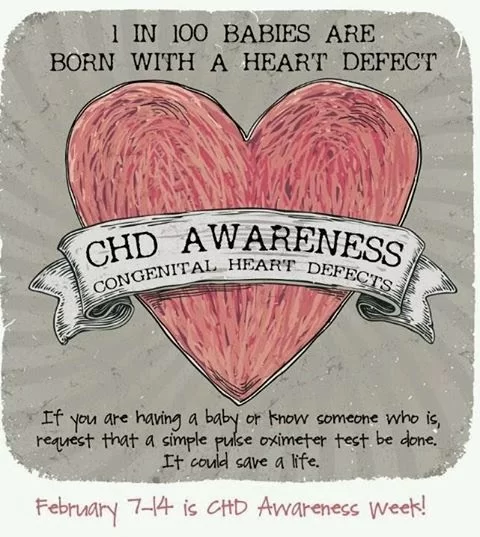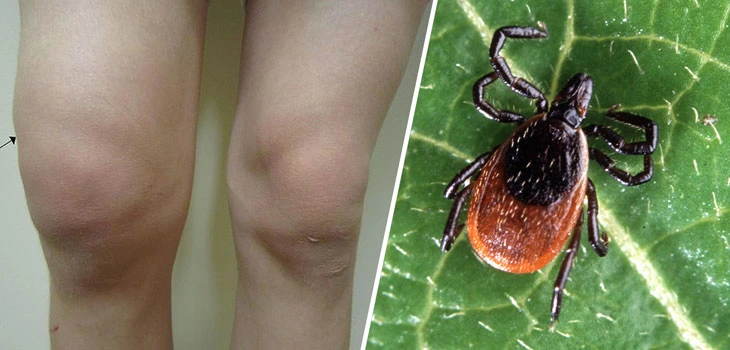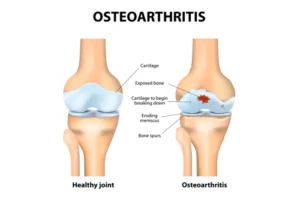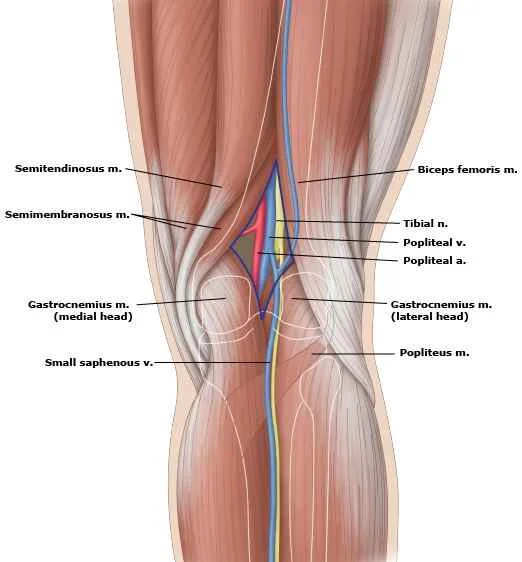Sore Throat
Introduction
- An irritated, painful, or scratchy throat that frequently gets worse as you swallow is called a sore throat. A painful throat caused by a virus goes on its own.
- The most common viral illnesses that result in pharyngitis, or sore throats, are colds and the flu. A painful throat caused by a virus goes on its own.
- Antibiotic treatment is necessary to avoid problems from occurring in cases of strep throat, and a less frequent bacterial sore throat (streptococcal infection).
- More involved therapy may be needed for sore throats caused by other, less prevalent reasons.
What is a sore throat?
- Experiencing pain, dryness, or itching in the throat is indicative of a sore throat.
- One of the most prevalent symptoms, throat pain represents almost 2%Trusted Source of all adult primary care visits annually.
- Mostly sore throats occur due to illnesses or external variables like dry air. Sore throats usually go away on their own, even if they might be annoying at times.
- Based on the area of the throat they affect, there are many types of sore throats:
- When someone has tonsillitis, the tonsils—a soft tissue in the back of the mouth—swell and turn red.
- With laryngitis, the larynx, or voice box, swells and turns red.
Anatomy
- What is the throat?
- Food, drink, and air pass via the muscular tube that makes up the throat, which is made up of the larynx and pharynx.
- It connects the trachea (windpipe), lungs, and esophagus (eating tube) to the breathing passages and the mouth (oral cavity).
- It is located at the back of the mouth and nose. Speech formation is aided by the throat as well.
- The tonsils and adenoids, which are composed of lymph tissue, are located in the throat. Adenoids are situated behind the nose, and tonsils are situated in the back and sides of the mouth. Infection prevention is aided by both of them.
- If your child needs to have their tonsils and adenoids removed, it won’t affect their ability to fight infections because there are plenty of alternative tissues that can fulfill this role.
- The muscular-lined region known as the pharynx joins the mouth, nose, larynx, and esophagus (eating tube).
- The larynx, sometimes referred to as the voice box, is a cylindrical assembly of muscles, cartilage, and soft tissue that houses the vocal cords.
- The windpipe, or trachea, is where the larynx is located on top and serves as the entrance to the lungs.
- The epiglottis is a soft tissue flap. and the cartilage that sits directly above the voice cords. To aid in preventing food particles and allergens from entering the lungs, the epiglottis folds down over the voice cords.
- The region directly below the voice chords is known as the subglottic space. It is the upper airway’s narrowest section
Causes
- Most sore throats are caused by the same viruses that cause the flu and the common cold. Sore throats are less commonly caused by bacterial infections.
- viral diseases
- The following viral infections can result in a sore throat:
- Typical cold
- Influenza, or the flu
- Mononucleosis, or mono
- Medication
- 2019 Coronavirus illness (COVID-19): chickenpox
- The common childhood sickness known as croup is marked by a severe, barking cough.
- Infections with bacteria
- A painful throat can result from numerous bacterial illnesses.
- The most prevalent is group A streptococcus, or Streptococcus pyogenes, which causes strep throat.
- additional reasons
- Allergies are among the other causes of a sore throat. A sore throat may result from allergies to molds, dust, pollen, and pet dander.
- Postnasal drip can aggravate the condition by irritating and inflaming the throat.
- dryness: Your throat may feel scratchy and raw while you’re indoors in dry air. A dry, scratchy throat can also result from breathing via your mouth, which is frequently caused by persistent nasal congestion.
- Irritants: Chronic sore throats can be brought on by indoor and outdoor pollutants including chemicals and cigarette smoke.
- You can irritate your throat by chewing tobacco, drinking alcohol, and consuming spicy meals.
- straining of muscles: Talking loudly, yelling, or speaking continuously for extended periods can cause tension in the muscles in your throat.
- GERD stands for gastroesophageal reflux disease. GERD is a condition affecting the digestive tract when stomach acids reflux into the esophagus, the food pipe.
- Heartburn, hoarseness, regurgitation of stomach contents, and a lump in your throat are possible additional indications or symptoms.
- HIV infection: Sometimes, the symptoms of the flu, including a sore throat, start to show up soon after an HIV infection.
- In addition, a person living with HIV may experience recurrent or persistent sore throats as a result of oral thrush, a fungal infection, or cytomegalovirus (CMV), both of which can present a concern to people whose immune systems are weakened.
- Growths: A sore throat may result from cancerous tumors of the tongue, throat, or larynx. Additional indications or symptoms could be a lump in the throat, trouble swallowing, noisy breathing, or hoarseness.
- It could be difficult to swallow if you have a sore throat. Additionally, a sore throat may feel itchy and dry.
- A sore throat may indicate an upper respiratory tract infection, allergies, strep throat, or the common cold. sore throat brought on by the group A bacteria or virus Similar symptoms can be seen with streptococcus.
- Occasionally, the symptoms listed below point to a virus rather than strep throat as the cause of the illness:
- Cough
- runny nose
- Hoarseness refers to vocal abnormalities that cause your voice to sound strained, raspy, or breathy.
- Conjunctivitis, also known as “pink eye”
- Hypersensitivity
- When the immune system reacts to allergens like pollen, grass, and pet hair, it releases chemicals that cause symptoms like watery eyes, sneezing, nasal congestion, and sore throats.
- Extra nasal mucus can trickle down the back of the throat. Postnasal drip is the term for this, which may irritate the throat.
- The mouth and throat might become parched and itchy when dry air absorbs moisture from them. In the winter, while the heater is operating, the air is most often dry. Chemicals, smoke, and other allergens
- The throat is irritated by a variety of chemicals and other environmental materials, such as air pollution, cleaning products, chemicals, and smoke of any kind, including tobacco smoke.
- aerosolized mists, like air fresheners
- In the immediate aftermath of September 11, over 90% of rescue personnel (Trusted Source) reported having an acute cough; many of them also mentioned symptoms related to upper airways, such as sore throat and nasal congestion.
- Certain types of injuries have the potential to cause sore throats. Additionally, if food particles become stuck in your throat, it could get irritated.
- The throat muscles and vocal cords get strained with repeated use. Sore throats can result from prolonged loud talking, yelling, or extended singing.
- For instance, since they frequently have to yell, teachers and fitness instructors sometimes complain about sore throats Trusted Source.GERD, or gastroesophageal reflux disease
- The disorder known as gastroesophageal reflux disease (GERD) causes the stomach’s acid to back up into the esophagus — the tube that carries food from the mouth to the stomach.
- One sign of acid burns to the esophagus and neck is acid reflux, or the regurgitation of acid into the throat.
- A painful throat can also result from laryngopharyngeal reflux (LPR), sometimes referred to as silent reflux, which is the reflux of stomach acid back up into the esophagus or neck.
- A tumor of the tongue, voice box, or throat is an uncommon cause of sore throats. A persistent sore throat after a few days may be a sign of cancer.
Symptoms
- Depending on the reason for the sore throat, several symptoms may appear. A sore throat might hurt and feel raw, burning, scratchy, painful, and irritated.
- Pain may intensify when you swallow or speak. Additionally, you can have red tonsils or a throat.
- On the tonsils, white patches or pus-filled areas can occasionally appear white patches are more common in cases of strep throat as opposed to viral sore throats.
- Other symptoms like the following could be present along with your sore throat:
- congestion in the nose
- Dry nose
- sneezing
- cold, fever, and cough
- glands swelling in the neck
- raspy voice
- bodily pains
- headache
- difficulty swallowing loss of appetite
- Fever Pain in the swallowing area
- sore throat that may appear red and develop very soon
- swelling and red tonsils
- pus-filled white areas or streaks on the tonsils
- Petechiae are little red patches on the roof of the mouth.
- enlarged lymph nodes in the neck’s front
Risk factors
- While sore throats can affect everyone, several things increase your risk of getting one, such as:
- Age: Children and teenagers are more likely to get sore throats.
- The most prevalent bacterial illness linked to sore throats in children is strep throat, which is more common in those between the ages of 3 and 15.
- Exposure to tobacco smoke: The throat can get inflamed by smoking and secondhand smoke. The risk of mouth, throat, and voice box cancers is also increased by tobacco product usage.
- allergic reactions: The likelihood of getting a sore throat increases with seasonal allergies or persistent allergic reactions to molds, dust, or pet dander.
- exposure to irritating chemicals: Throat inflammation can be brought on by airborne particles from burning fossil fuels and ordinary home chemicals.
- sinus infections that are ongoing or recurring.
- Drainage from Your nose may cause an infection or irritate your throat.
- Nearby. Infections caused by bacteria and viruses can proliferate in any setting where people congregate, including childcare facilities, schools, workplaces, and aircraft.
- reduced resistance to infection.
- If your resistance is low, you’re more vulnerable to infections in general.
- Reduced immunity is frequently caused by HIV, diabetes, chemotherapeutic or steroid medication, stress, exhaustion, and poor diet.
Strep throat vs. sore throat
- A sore throat could be a sign of strep throat, an infection brought on by the bacteria Streptococcus pyogenes.
- Apart from a painful throat, strep throat can also result in additional symptoms such as Trusted Source:
- discomfort when swallowing fever
- enlarged lymph nodes
- headache
- stomach ache
- large or red tonsils with white spots occasionally
- little red blotches on the oral cavity’s roof
- feeling easy or throwing up
- In contrast to other ailments that may result in a sore throat, strep throat is not linked to runny nose, coughing, pink eyes, or hoarseness.
- Furthermore, strep throat necessitates antibiotic therapy, although a sore throat typically gets better on its own over time.
Sore Throat vs. COVID-19
- A painful throat is among the symptoms that can be caused by the viral illness COVID-19.
- Other possible symptoms of COVID-19 include:
- fever or chills
- cough
- shortness of breath
- body aches
- fatigue
- headache
- loss of taste or smell
- nasal congestion or runny nose
- diarrhea
- nausea or vomiting
- You may want to consider getting tested if you experience any of these symptoms, along with a sore throat, or have been exposed to COVID-19 recently.
Diagnosis
- examining the throat, and probably the ears and nasal passageways, with a lit instrument
- Feeling the neck gently to look for enlarged glands (lymph nodes)
- Using a stethoscope to listen to your own or your child’s breathing
- Swab for the throat
- The bacteria that causes strep throat, streptococcal, is often found via a straightforward test that physicians perform.
- To collect a sample of secretions, the physician wipes a sterile swab across the back of the throat.
- The sample is then sent to a lab for analysis rapid antigen test results can be obtained in a matter of minutes from a lab that is available at many clinics.
- Nonetheless, a throat culture, which is a second and frequently more trustworthy test, is occasionally sent to a lab for analysis in a day or two.
- Fast antigen tests can swiftly identify strep germs, although they are less sensitive. As a result, if the antigen test is negative, the doctor can request that a throat culture be sent to a lab for a strep throat diagnosis.
- To find streptococcal germs, medical professionals occasionally employ molecular testing. A sterile swab is used by the physician to collect a sample of secretions from the back of the throat during this test.
- In a lab, the sample is examined. In a few minutes, the doctor treating you or your kid might have accurate results.
- During the examination, the physician will inquire about your symptoms and examine the back of your throat for redness, swelling, and white spots using a light.
- The physician may also palpate the sides of your neck to check for enlarged glands.
- Your doctor will order a throat culture if they think you have strep throat. To check for strep throat bacteria, the doctor will swab the back of your throat and take a sample.
- The doctor can receive the results of a fast strep test in a matter of minutes.
- A lab will test the sample to confirm the diagnosis. In just one to two days, a lab test can conclusively demonstrate that you possess strep throat.
- A throat culture can also be used to screen for gonorrhea or chlamydia, two other bacterial diseases. To rule out mononucleosis, another option is to perform a mononucleosis spot test or mono antibody test.
- To determine the exact cause of your sore throat, you may occasionally require additional testing.
- You can consult an otolaryngologist, sometimes known as an ear, nose, and throat (ENT) specialist, who specializes in treating disorders of the throat.
Treatment of Sore Throat
Medical treatment
- Antibiotics are required to treat strep throat since the infection is caused by bacteria, which also prevent rheumatic fever and other problems.
- By looking at the throat, a doctor cannot diagnose strep throat. Your doctor can test you to see if you have strep throat or if it is the cause of your illness if they suspect you do.
- When a person has strep throat, they should avoid going to work, school, or childcare until their fever has subsided and they have had antibiotics for at least twelve hours.
- Antibiotics won’t help if a sore throat is caused by a virus.
- Most sore throats heal on their own in a week or less. Your physician might advise you to take additional medications or offer you self-care advice.
- The following over-the-counter drugs can help with throat pain: aspirin, ibuprofen (Advil, Motrin), and acetaminophen (Tylenol).
- Children and teenagers shouldn’t be given aspirin since it has been connected to Reye’s syndrome, an uncommon but dangerous illness.
- Additionally, you can try one or more of the following remedies, which target the sore throat’s pain directly:
- a spray for sore throats that has cooling ingredients like menthol or eucalyptus or numbing antiseptics like phenol
- tongue lozenges
- cough syrup
- Purchase throat lozenges.
- Purchase cough syrup.
- Several herbs are marketed as treatments for sore throats, such as marshmallow root, licorice root, and slippery elm. Although there isn’t much proof that these are effective, some people might find that herbal teas with these constituents, like Throat Coat, are helpful. Get Throat Coat herbal tea online.
- GERD-related sore throats can be alleviated with medications that lower stomach acid. Among them are:
- antacids to counteract stomach acid, like Mylanta, Rolaids, Maalox, and Tums.
- H2 blockers to lessen the formation of stomach acid, such as famotidine (Pepcid AC) and cimetidine (Tagamet HB).
- Proton pump inhibitors (PPIs), which stop the generation of acid, include omeprazole (Prilosec, Zegerid OTC) and lansoprazole (Prevacid 24).
- Purchase antacids.
- Without having any negative side effects, low-dose corticosteroids can also help Trusted Source with the discomfort of a sore throat.
When do you need antibiotics?
- Strep throat and other bacterial illnesses are treated with antibiotics. Viral infections won’t be treated by them.
- Antibiotics are necessary for the treatment of strep throat to avoid more serious side effects such as pneumonia, bronchitis, and rheumatic fever.
- Antibiotics can lessen the likelihood of rheumatic fever by more than two-thirds and alleviate throat pain in approximately one day.
- Typically, doctors recommend an antibiotic course that lasts for roughly ten days Trusted Source. Even if you start to feel better, it’s still crucial to take the entire prescribed amount of medication.
- If you stop taking an antibiotic too soon, some germs may still be alive and cause you to become ill again.
- Additionally, it may result in antibiotic resistance, which would make future antibiotic treatments more difficult.
Over-the-counter medicines and Children
- Specific over-the-counter medications are not advised for use in children under a specific age.
- Pain killers:
- For infants under six months old: just provide acetaminophen.
- Acetaminophen or ibuprofen can be given to children six months of age or older. Children should never use aspirin since it can cause Reye’s syndrome.
- Reye’s syndrome is an uncommon but extremely dangerous condition that can damage the brain and liver.
- Cough and cold remedies: Unless a doctor specifically instructs you to do so, do not provide over-the-counter cough and cold remedies to children under the age of four.
- In young children, cough and cold medications can have major, occasionally fatal side effects.
- Children 4 years of age and up: find out from your child’s physician whether it’s okay to give them over-the-counter cough and cold remedies.
Home Remedies
- Consume liquids. Fluids reduce dehydration and keep the throat wet. Stay away from alcohol and caffeine as they can dehydrate you.
- Try nourishing meals and drinks. Cold delights like ice pops and warm beverages like broth, caffeine-free tea, or warm water with honey might help relieve sore throats. Give honey only to youngsters one year of age or younger.
- Use saltwater to gargle. A sore throat can be relieved by gargling 1/4 to 1/2 teaspoon (1250 to 2500 milligrams) of table salt in 4 to 8 ounces (120 to 240 milliliters) of warm water.
- Youngsters who are older than six and Adults can spit out the solution after gargling it.
- Make the air more humid. To avoid adding to the irritation of a sore throat, use a cool-air humidifier. Just make sure to clean the humidifier frequently to prevent the growth of bacteria or mold.
- Or take a seat in a steamy restroom for a few minutes.
- Think of chewing gum or hard candies. Both can help ease a sore throat, but due to the risk of choking, they shouldn’t be given to children under the age of four.
- Steer clear of irritants. Keep throat-irritating cleaning supplies and cigarette smoke out of your house.
- Remain indoors until you feel better. By doing this, you may help keep people from contracting a cold or another illness.
Preventions
- Though they can’t always be prevented, there are a few things you can do to help prevent sore throats.
- Refrain from close contact with individuals suffering from respiratory infections, sore throats, or colds. Wash your hands frequently.
- If you smoke, consider quitting and make an effort to reduce the amount of secondhand smoke you are around.
Summary
- Most sore throats are caused by bacterial and viral diseases, as well as by irritants and accidents. If no medication is given, the majority of sore throats heal in a few days.
- Sore throats can be relieved at home with rest, warm beverages, saltwater gargles, and over-the-counter pain medicines.
- Antibiotics are used to treat strep throat and other bacterial illnesses. A swab test can be used by a physician to diagnose strep throat.
- For more serious symptoms, such as dysphagia, a high temperature, or a stiff neck, consult a physician.
FAQ
Why does one get a sore throat?
Swelling in the area below the tonsils and voice box (the pharynx) is the cause of pharyngitis.
Colds, the flu, the coxsackie virus, or mono (mononucleosis) are the most common causes of sore throats.
Bacteria that occasionally cause pharyngitis include Groups that are the cause of strep throat.
What is the expected duration of a sore throat?
A virus-induced sore throat has no known treatment. The painful throat will go away in two to seven days.
Can you treat a sore throat with honey?
Honey has the potential to alleviate throat discomfort and inflammation.
Which four signs correspond to strep throat?
Typical signs and symptoms could be:
High-temperature
discomfort during swallowing.
sore throat that may appear red and that might develop very quickly.
swelling and red tonsils
How does a sore throat caused by COVID feel?
This soreness could make swallowing uncomfortable and result in a scratchy or dry feeling in the throat.
Reference
- Philadelphia, C. H. O. (n.d.). Throat Anatomy and Physiology. Children’s Hospital of Philadelphia. https://www.chop.edu/conditions-diseases/throat-anatomy-and-physiology
- Watson, S. (2022, July 20). Sore Throat 101: Symptoms, Causes, and Treatment. Healthline. https://www.healthline.com/health/sore-throat#What-is-a-sore-throat?
- Suffering from a sore throat? (2023, November 22). Centers for Disease Control and Prevention. https://www.cdc.gov/antibiotic-use/sore-throat.html
- Sore throat – Diagnosis & treatment – Mayo Clinic. (2021, June 10). Mayo Clinic. https://www.mayoclinic.org/diseases-conditions/sore-throat/diagnosis-treatment/drc-20351640







